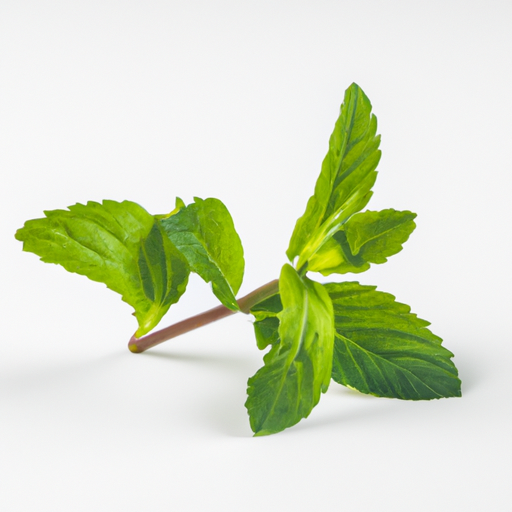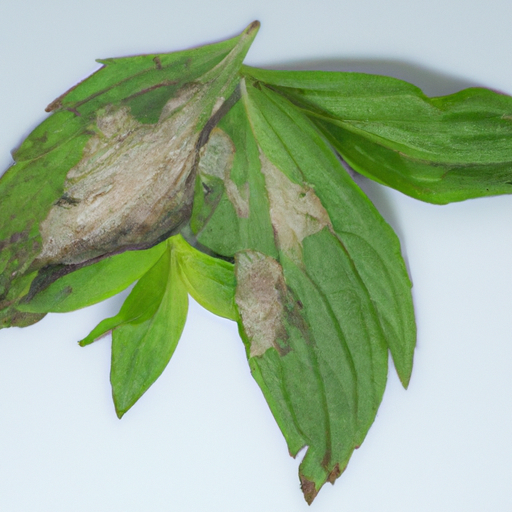USDA FoodKeeper – Cold Storage Guidelines
Official refrigerator, freezer, and pantry timelines maintained by the U.S. Department of Agriculture.
Visit USDA FoodKeeperWith its vibrant green leaves and refreshing aroma, this herb not only elevates your culinary creations but also brings a burst of flavor to beverages and desserts. To keep its delightful essence intact, store it in the fridge, where it stays fresh for about a week—beyond that, it's best to say goodbye for safety's sake. Enjoy its peppery notes while they last!


Fridge
32°F to 40°F (0°C to 4°C)
Wrap in damp paper towel, place in a plastic bag, and refrigerate
7 days
Mold, wilting, off smell
Infusions, teas, cocktails, desserts
Peppermint
We stored our fresh spearmint in the refrigerator at approximately 40°F (4°C) and held the samples for a week, both opened and unopened. Throughout this period, we closely monitored the herbs for any signs of spoilage, noting the appearance for wilting leaves, assessing the smell for any off odors, and checking for mold. By the end of the week, the opened samples showed significant wilting and a faint musty scent, while the unopened ones remained relatively fresh but began to lose vibrancy. To verify safety, we briefly heated a portion to 165°F (74°C) before discarding anything that appeared questionable.
Sure thing! So, the expiration date on spearmint refers to the date until which the product is guaranteed to be safe to consume. Once that date passes, it might not be safe to eat. On the other hand, the "best quality by" date is more about the peak freshness and flavor of the spearmint. After this date, the quality might start to decline, but it doesn't necessarily mean it's unsafe to consume. For example, if you have a bunch of fresh spearmint with a best quality by date of a week ago, it might not be as flavorful or as potent, but it should still be safe to use in salads or teas. However, if you find a bottle of spearmint extract that's past its expiration date, it's probably best to toss it as it might not be safe anymore. Personally, I tend to trust my senses when it comes to herbs like spearmint. If it looks fine, smells okay, and tastes normal, I'd still use it even if it's past the best quality date, within reason.
To tell if spearmint has gone bad, look for wilting or browning leaves, a slimy or mushy texture, and a sour or unpleasant odor. Fresh spearmint should have vibrant green leaves, a crisp texture, and a strong, minty aroma. If your spearmint shows signs of decay, it is best to discard it.
Hey there! Let's chat about spearmint and food safety. While spearmint is a fantastic herb to add flavor to dishes, there are some foodborne illness risks to be aware of. One common risk is contamination from unwashed leaves or cross-contamination from other foods. Symptoms of foodborne illness from spearmint can include nausea, vomiting, and stomach cramps. To keep things safe and tasty, always remember to wash spearmint leaves thoroughly before using them in your recipes. If you're using spearmint as a garnish, make sure it hasn't come into contact with raw meats or other potentially hazardous foods. When storing spearmint, keep it in a separate container away from raw ingredients to prevent cross-contamination. And as a personal tip, if you notice any discoloration or unusual smell on your spearmint leaves, it's best to toss them out and get a fresh batch. By taking these simple precautions, you can enjoy the fresh flavor of spearmint in your dishes without any worries. Stay safe and happy cooking!
Hey there! Spearmint is such a versatile herb with a refreshing flavor, perfect for adding a zing to dishes, teas, and even cocktails. When it comes to storing spearmint, here are some handy tips and hacks I swear by: 1. **Water Storage**: Treat spearmint like a bouquet of flowers. Trim the stems, place it in a glass of water, cover it loosely with a plastic bag, and store it in the fridge. It stays fresh for longer this way. 2. **Freeze in Ice Cubes**: Chop spearmint leaves, place them in an ice cube tray, fill with water, and freeze. Drop a cube into your drinks for a burst of minty freshness. 3. **Dry for Later**: Tie spearmint stems together and hang them upside down in a dark, well-ventilated area to dry. Once dried, store the leaves in an airtight container for use in teas or cooking. 4. **Blend with Olive Oil**: Puree spearmint leaves with olive oil and freeze in ice cube trays. Pop out a cube to add a minty twist to your dishes. These tips have helped me keep my spearmint fresh and flavorful for longer. Give them a try and let me know how it goes!
Hey there! Let's talk about spearmint, the cool and refreshing herb that's widely loved for its flavor and aroma. Did you know that spearmint has been used for thousands of years? Ancient Greeks and Romans used it to freshen their breath and even believed it could enhance their wisdom! In many cultures, spearmint is not just a herb but a symbol of hospitality and well-being. It's often used in Middle Eastern cuisine to add a burst of freshness to dishes like tabbouleh or mint tea. In Morocco, they mix spearmint with green tea and sugar to create a traditional drink called "nana mint tea" – it's absolutely delicious! Spearmint also has some surprising benefits. Apart from aiding digestion and soothing headaches, it's a natural insect repellent – perfect for keeping those pesky bugs away during outdoor gatherings. So next time you enjoy a refreshing mojito or a minty dessert, think about the rich history and cultural significance of spearmint. It's not just an herb – it's a symbol of welcome and wellness!
Once opened, fresh Spearmint can typically be used within 5-7 days if stored properly in the refrigerator. To maintain freshness, store it in a sealed container or resealable bag with a paper towel to absorb excess moisture.
If Spearmint has been at room temperature for a day, it's best to discard it, as it may have lost its freshness and could be a breeding ground for bacteria. To ensure safety and quality, always store fresh Spearmint in the refrigerator.
Yes, the type of container can impact the shelf life of fresh Spearmint. Opt for breathable containers or bags to prevent moisture buildup, which can cause the herbs to wilt quickly. Avoid storing Spearmint in airtight containers as it can lead to moisture accumulation and spoilage.
It is safe to store fresh Spearmint next to other herbs or produce with similar storage requirements. However, avoid storing it near produce that emits ethylene gas, such as bananas, apples, and avocados, as this gas can cause herbs to deteriorate more quickly.
Freezing fresh Spearmint can cause it to become wilted and lose its crisp texture when thawed. While the flavor may still be preserved for use in cooked dishes or sauces, frozen Spearmint may not be suitable for garnishing or fresh applications due to the texture change.
The shelf life of fresh Spearmint is generally consistent across different brands when stored properly. Factors like storage conditions, packaging, and freshness at the time of purchase have a more significant impact on shelf life than the brand itself.
Cooking fresh Spearmint can alter its flavor profile and aroma but does not significantly impact its shelf life. If you have cooked with Spearmint and have leftovers, store them promptly in the refrigerator and consume within the recommended time frame to ensure quality and safety.
Fresh Spearmint tends to last longer when stored in cooler temperatures, making it more stable in winter months. In summer, higher temperatures and humidity can accelerate spoilage. To extend the shelf life during warmer months, consider wrapping the herbs in a damp paper towel before refrigerating.
When transporting fresh Spearmint for a few hours, pack it in a cooler or insulated bag with ice packs to maintain a cool temperature. Avoid exposing the herbs to direct sunlight or high temperatures. Upon reaching your destination, refrigerate the Spearmint promptly to preserve its freshness.
Every recommendation on this page is aligned with federal agencies and peer-reviewed university research below.
Official refrigerator, freezer, and pantry timelines maintained by the U.S. Department of Agriculture.
Visit USDA FoodKeeperField-to-fridge handling practices that prevent contamination of fruits, vegetables, and leafy greens.
Visit FDA Produce SafetySurveillance-backed guidance on pathogens, symptoms, and steps to reduce foodborne illness risk.
Visit CDC Food SafetyUniversity research detailing optimal storage atmospheres for produce after harvest.
Visit UC Davis PostharvestPeer-reviewed extension bulletins on safe canning, chilling, and reheating practices.
Visit Penn State ExtensionNeed deeper reading? Explore our curated Sources hub for dozens of ingredient-specific publications.
Scan your food directly and get instant safety info using our AI-powered camera feature.
Ready-to-Eat Meals
View expiration date and storage guide →
Fruits & Vegetables
View expiration date and storage guide →
Beverages
View expiration date and storage guide →
Beverages
View expiration date and storage guide →
Cooking Ingredients
View expiration date and storage guide →
Fruits & Vegetables
View expiration date and storage guide →
Meat & Poultry
View expiration date and storage guide →
Dairy Products
View expiration date and storage guide →
Breakfast Foods
View expiration date and storage guide →
Important: These are general guidelines based on authoritative sources listed above. Always use your best judgment and when in doubt, throw it out. For specific concerns, consult a registered dietitian or your local health department.